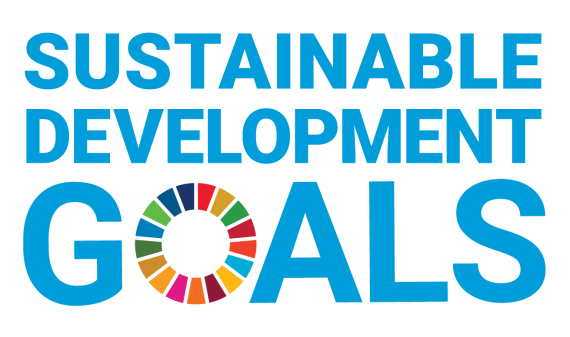
On Thursday (February 4), the conference program at ISPO Munich Online will focus on sustainability. Jill Dumain, CEO of Bluesign Technologies AG, will speak about the ambitious Sustainable Development Goals of the United Nations in her keynote starting at 3:50 pm. In the Panel Talk "What does our industry to support the SDGs?", Jill Dumain, Hao Ding (Sorona DuPont), Richard Collier (CEO Jack Wolfskin) and Kim Scholze (Community Manager Outdoor, Messe München GmbH) will discuss.
In the run-up to ISPO Munich Online, ISPO.com answers the most important questions about the SDGs here.
Granted, the term „Sustainable Development Goals (SDGs) sounds a bit unwieldy. But behind them there is a sophisticated and concrete agenda of how we can meet the global challenges of our time. The SDGs define how to reduce poverty and hunger, improve health, enable equality and protect the planet.
As these goals are to be achieved by 2030, they are often referred to as Agenda 2030, which was adopted by all member states of the United Nations and applies to all countries - both developed and developing countries are responsible for their implementation.
There are 17 sustainable development objectives in total. They range from goal number one -„End poverty in all its forms everywhere" up to goal seventeen „Strengthening the means to implement and revitalise the Global Partnership for Sustainable Development".
Sport unites people, awakens their ambitions and is a source of hope in various sectors of society. This is why the United Nations has long emphasised the important contribution of sport to achieving all 17 SDGs. Clearly, sport contributes to the defeat of Objective 3, „To ensure a healthy life and promote the well-being of all people at all ages". Finally, physical inactivity has been identified by the World Health Organization as the fourth largest risk factor for increased mortality worldwide
But sport also has the potential to improve lives, raise people's educational attainment and thus help in the fight against poverty, which is defined as Objective 1. Last but not least, sporting events receive enormous international attention and can serve as a platform to promote respect for human rights or to raise money for initiatives to combat poverty.
The SDGs were adopted by the UN General Assembly on 25 September 2015. They are part of UN Resolution 70/1, the Development Agenda 2030 entitled „Transforming our world: the sustainable development agenda 2030". This agenda has a total of 92 paragraphs. Paragraph 59 describes the 17 sustainable development objectives and the 169 sub-objectives associated with them.
The SDGs were created to formulate solutions to the major social, ecological and economic challenges of our time. Until 2015, these were the so-called Millennium Development Goals (MDGs). These were eight international goals that were set after the United Nations Millennium Summit in 2000. The focus of the MDGs was on social goals to be implemented in poorer countries.
Because the MDGs deliver in 2015, the United Nations had to set a new agenda. The member states of the UN wanted to use this opportunity to introduce sustainability aspects in addition to social and economic issues. In addition, they wanted to create goals that would apply not only to developing countries, but to all states - including rich industrial nations like Germany.
The SDGs were adopted by the UN General Assembly. It has 193 member states, of which more than two thirds are developing countries.
At the level of international politics, all countries are obliged to develop their own action plan on SDGs and to determine how the goals will be implemented in their own countries. In order to determine what progress has been made, a global UN Sustainability Summit ("SDG Summit") will be held every four years at the level of Heads of State and Government, the first time in September 2019.
However, SDGs should not only serve as a compass for governments, but also involve civil society and the business community. Therefore, sports associations and the sports business are also called upon to get involved.
The SDGs are not legally binding for the signatory states. Their implementation is not enforceable under international law. Although they are based on a broad consensus among UN member states, each country can set its own priorities for implementation.
Show that sport has the power to change our society for the better. If you practice sport in a club or team, think about how you can use your community to reach and integrate disadvantaged groups or to sensitize others to sustainable behavior. Question your own behaviour critically: What clothes and materials do you use and how sustainably were they produced? How do we behave in order not to harm nature during outdoor sports? And discuss how we can use the power of sport to build bridges!
A good starting point for this is the ISPO SDG Summit. You can help shape its agenda: Share it with us via our online questionnaire #BringYourProblem will tell you which challenges you see most urgently and where you see the greatest potential for sports and outdoor activities to drive change.
- ISPO awards
- Mountain sports
- Bike
- Design
- Retail
- Fitness
- Health
- ISPO Job Market
- ISPO Munich
- ISPO Shanghai
- Running
- Brands
- Sustainability
- Olympia
- OutDoor
- Promotion
- Sports Business
- ISPO Textrends
- Triathlon
- Water sports
- Winter sports
- eSports
- SportsTech
- OutDoor by ISPO
- Heroes
- Transformation
- Sport Fashion
- Urban Culture
- Challenges of a CEO
- Trade fairs
- Sports
- Find the Balance
- Product reviews
- Newsletter Exclusive Area
- Magazine






